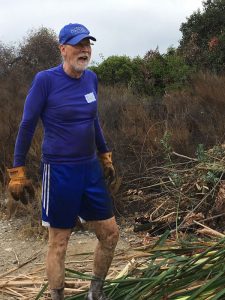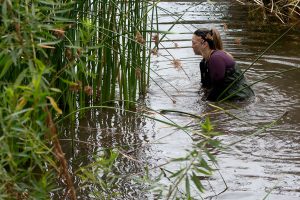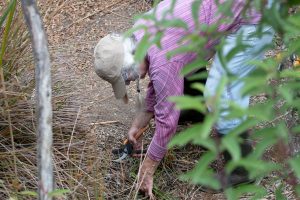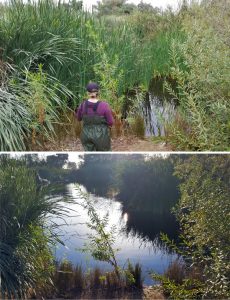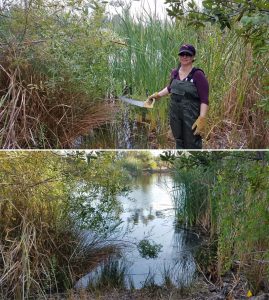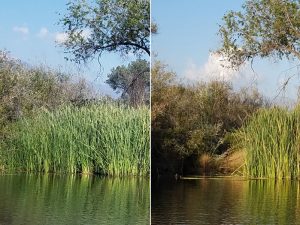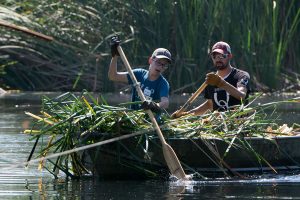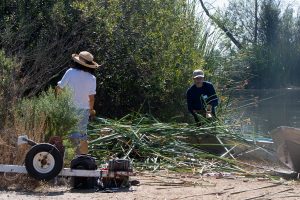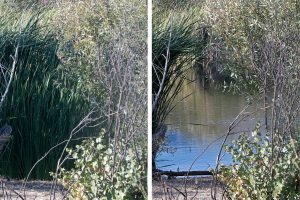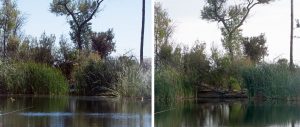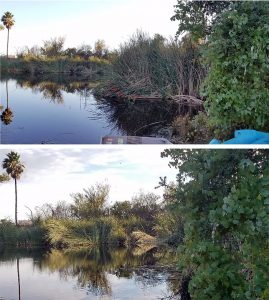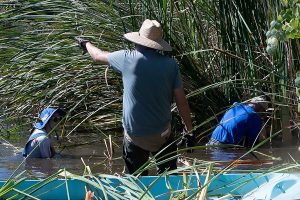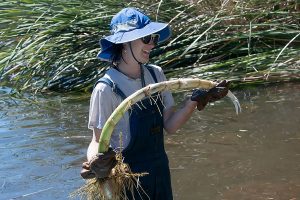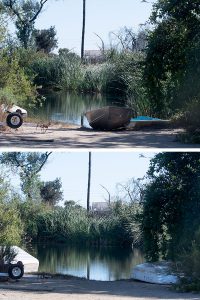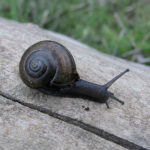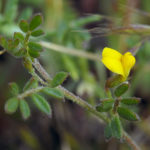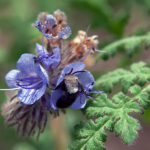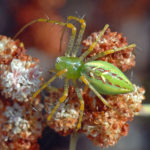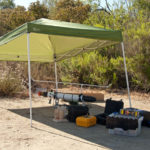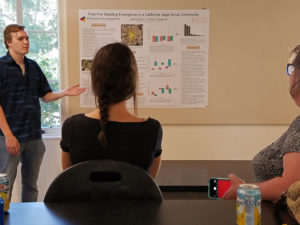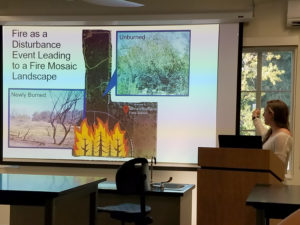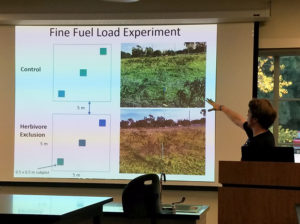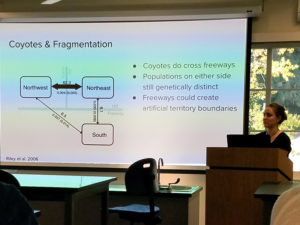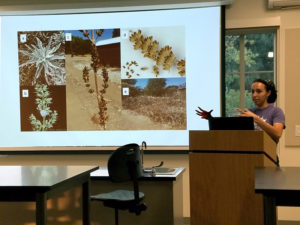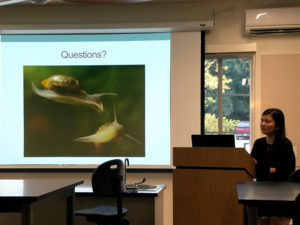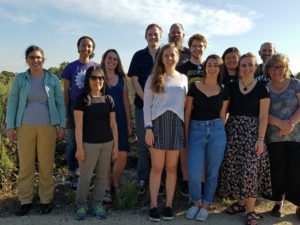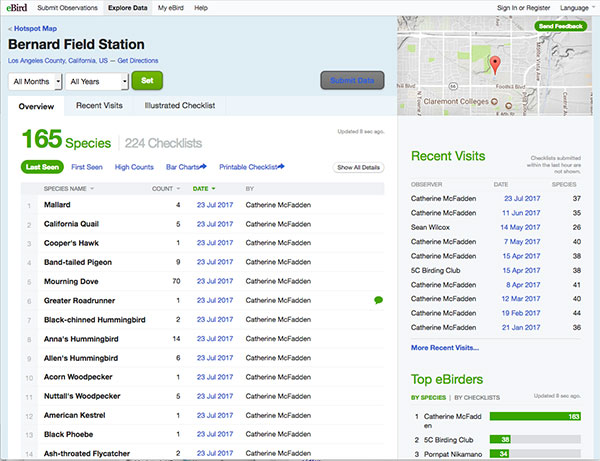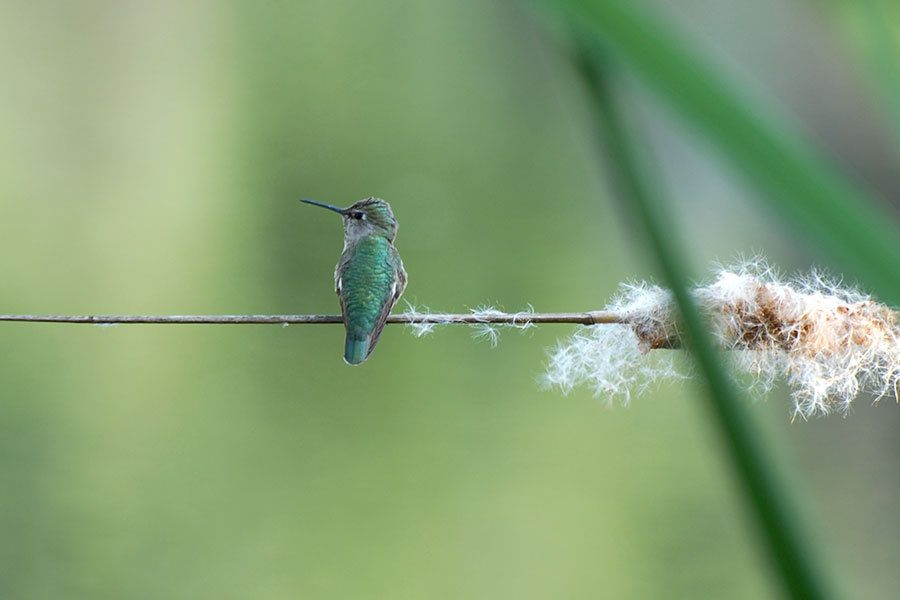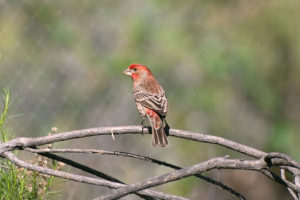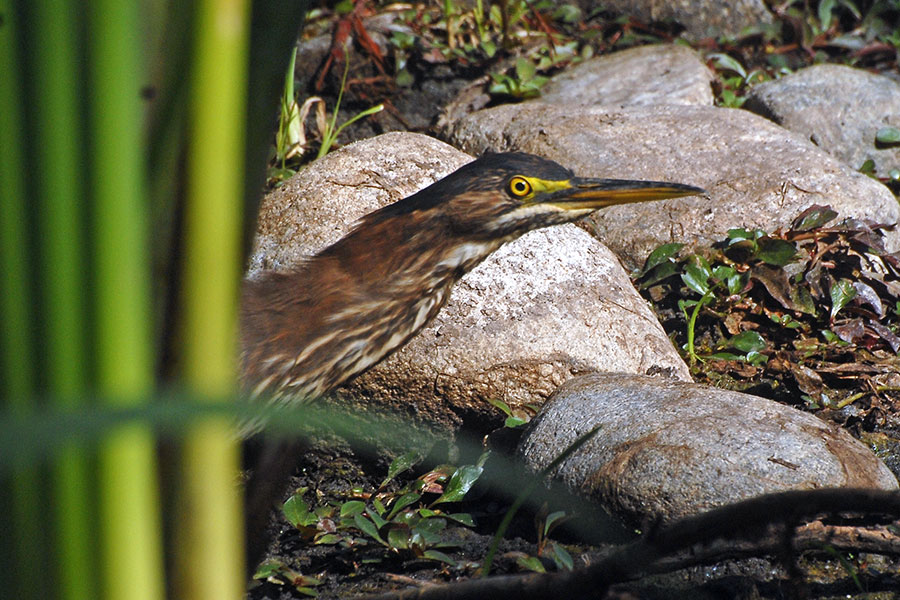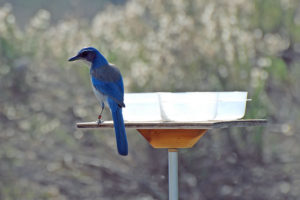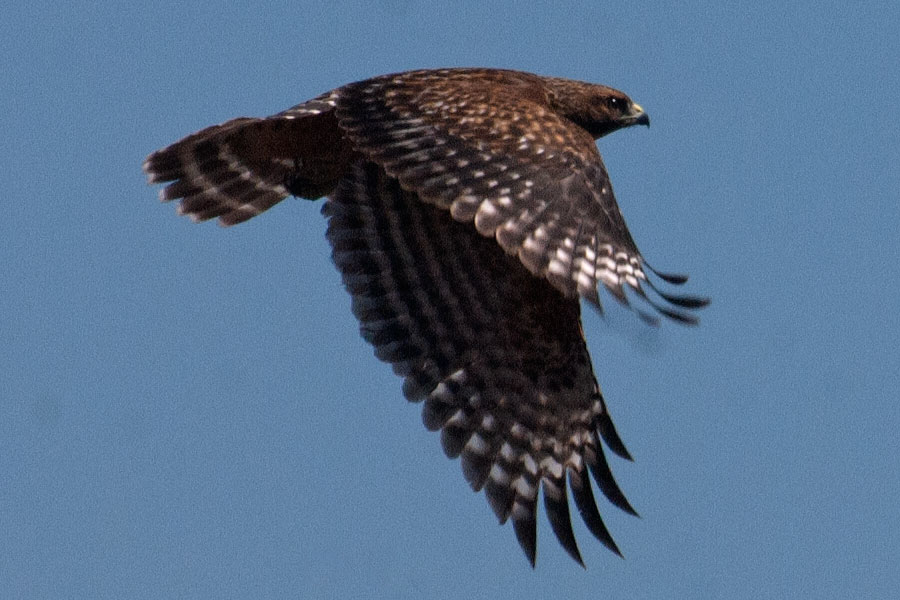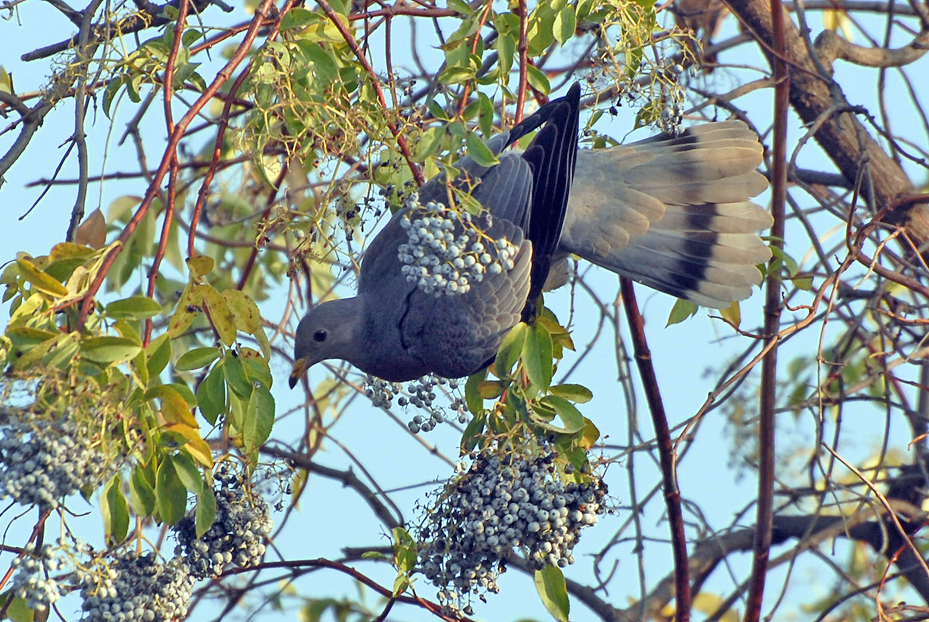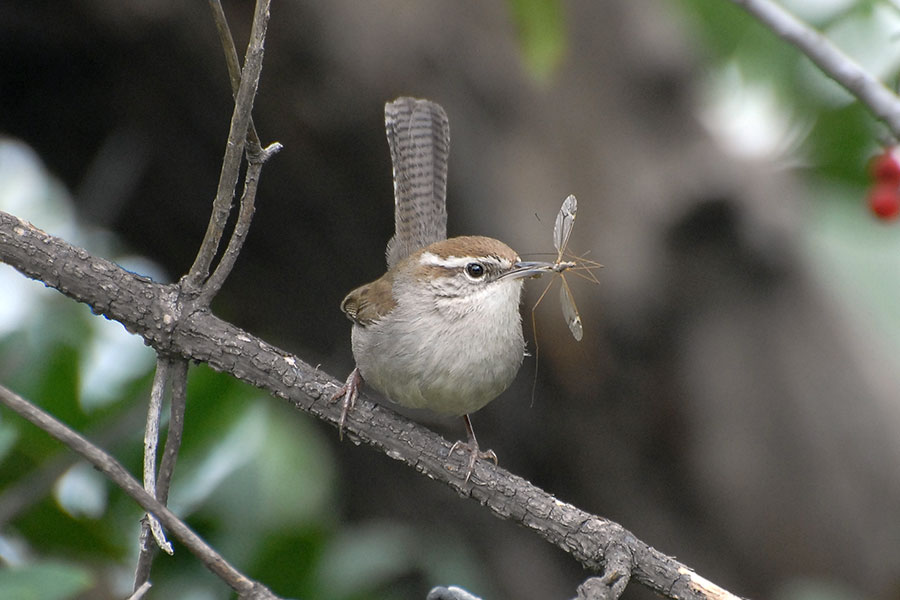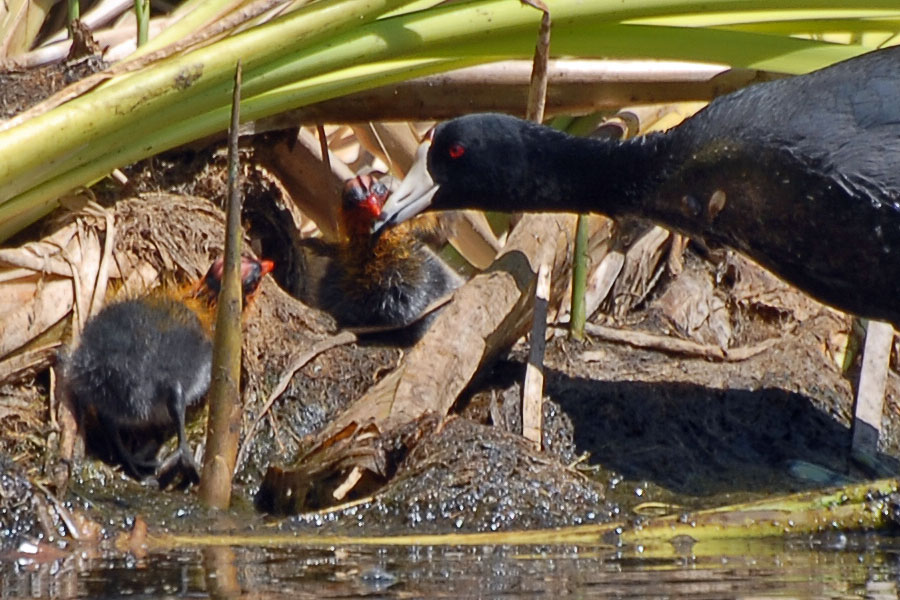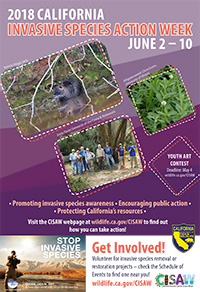
The California Department of Fish & Wildlife has declared June 2 – June 10 “California Invasive Species Action Week“, so Saturday, June 9, was the perfect day to have Sustainable Claremont’s Green Crew to the BFS to learn about and remove invasive plants.
After an introduction to the BFS and some of our invasive plant species, the Green Crew together with some of our regular BFS volunteers removed Short-pod Mustard (Hirschfeldia incana), Maltese Star Thistles (Centaurea melitensis), Horehound (Marrubium vulgare), and Tree Tobacco (Nicotiana glauca) from two disturbed areas. One is the area that burned in the May 2017 “Foothill Fire“, and this spring it became covered with mustard (and some star thistles), which, if not removed, will prevent the natives shrubs from growing back. The second area was bulldozed during the establishment of sewer connections to the newly renovated Redford Conservancy for Southern California Sustainability. Volunteers planted this area in the fall with native plants that had been propagated from the BFS, but this area was also being invaded by mustard, horehound, and tree tobacco, which would be compete with the newly established native plants.
Here are some photos from the workday:
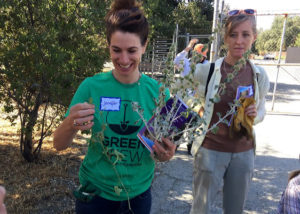
Jennifer Stark examines Horehound (and a piece of Wild Cucumber that was climbing on it) while Sorrel Stielstra looks on. ©Marcyn Clements.
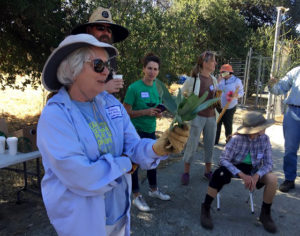
BFS Volunteer Coordinator Nancy Hamlett shows the volunteers Tree Tobacco. ©Marcyn Clements.
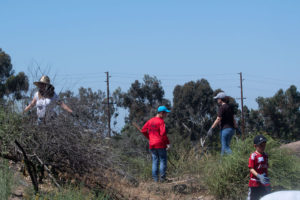
Volunteers remove Short-pod Mustard from the burned area. ©Nancy Hamlett.
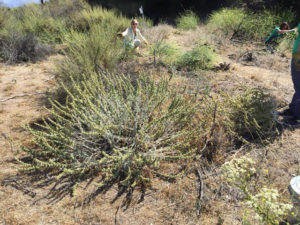
A giant Horehound just ready to be removed! ©Marcyn Clements
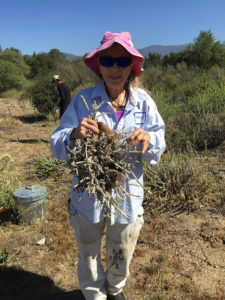
Marcyn Clements conquers the giant horehound! ©Marcyn Clements
At the end of the workday, we had had several HUGE piles of invasive plants that will be left to decay in place.
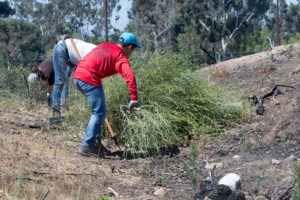
A Short-pod Mustard plant goes onto a trash pile. ©Nancy Hamlett.
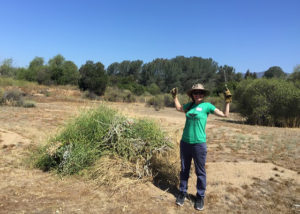
Jen Pizzolo shows off another big pile of mustard and horehound. ©Marcyn Clements
And the volunteers also took time to appreciate some of the wildlife at the BFS. The toad pond in the burn area was filled with Western Toad tadpoles, and newly metamorphosed toadlets were hopping around on the shore.
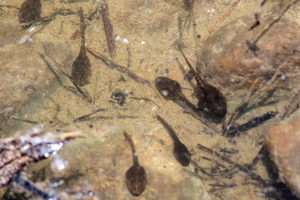
Western Toad tadpoles in the toad pond. ©Nancy Hamlett.
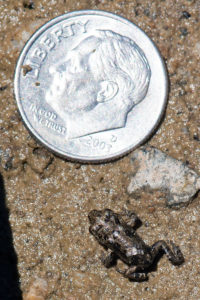
A newly metamorphosed Western Toad at the toad pond. ©Nancy Hamlett.
And a Great Blue Heron stopped by to fish in pHake Lake.
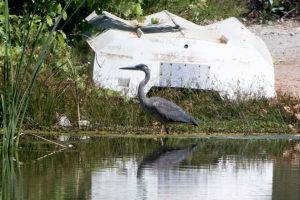
A Great Blue Heron at pHake Lake. ©Nancy Hamlett.
All in all, it was most successful day! We hope this will be the first of many collaborations of Green Crew and the BFS.
Tags: Maltese Star Thistle, mustard, volunteers
